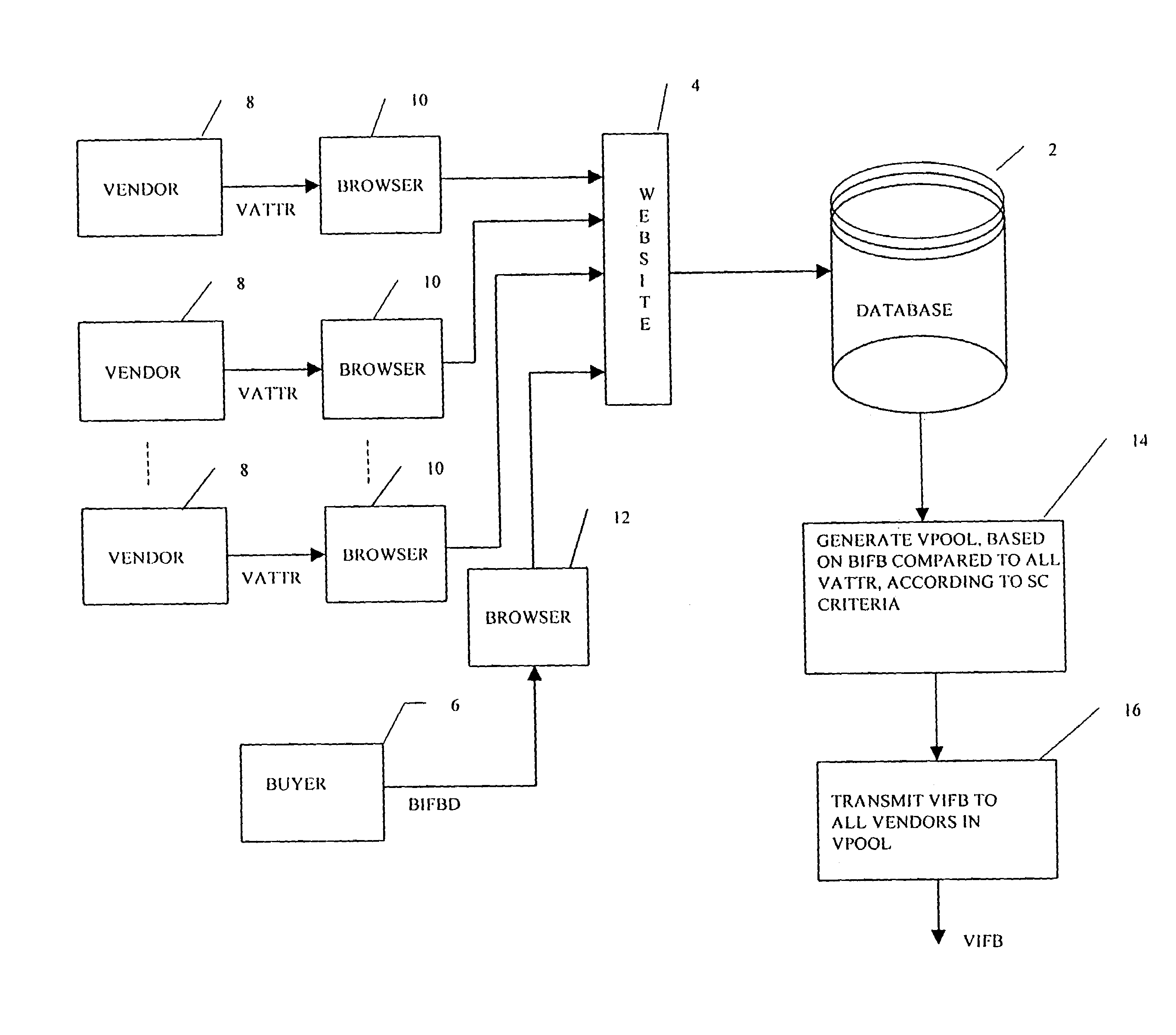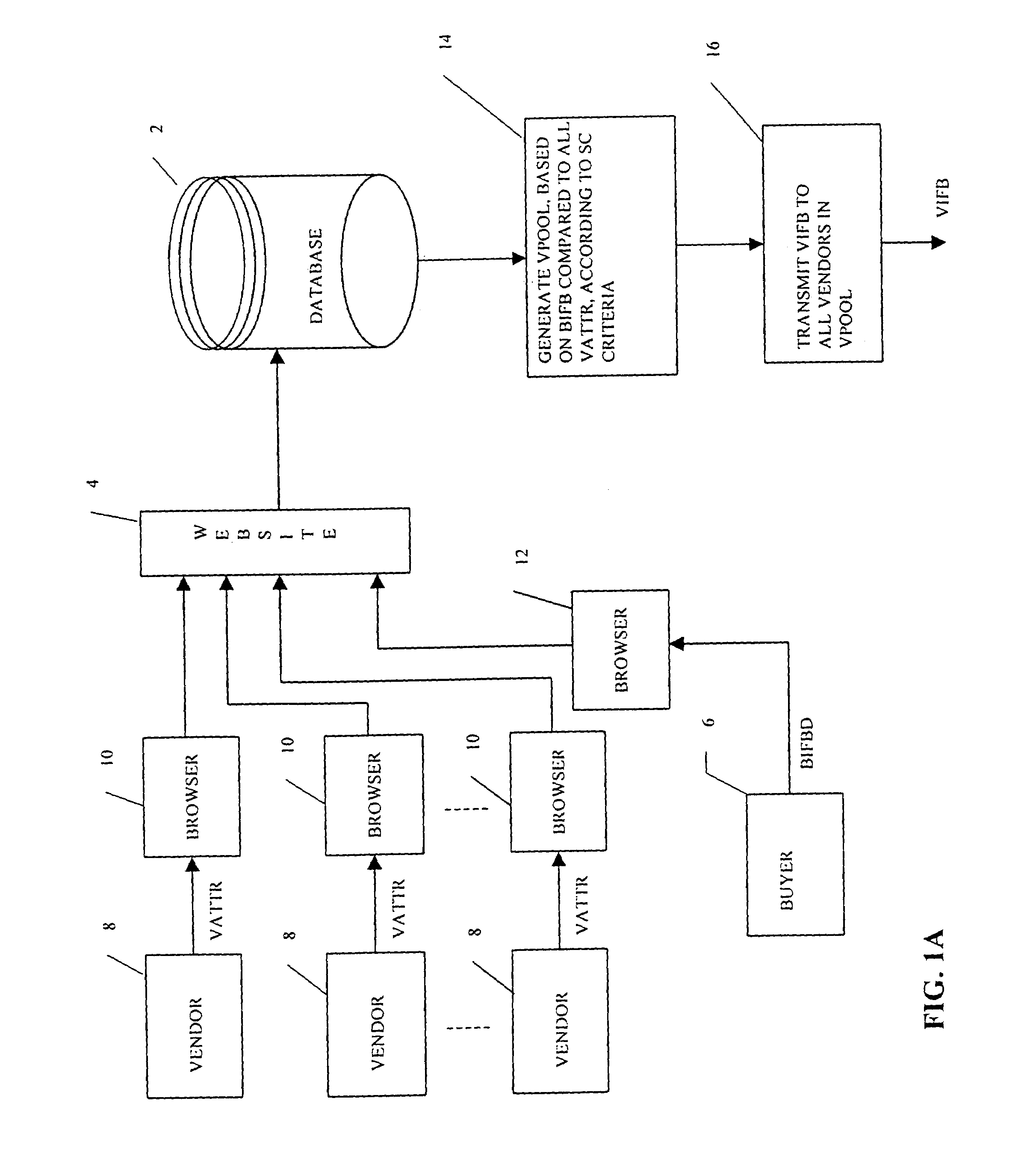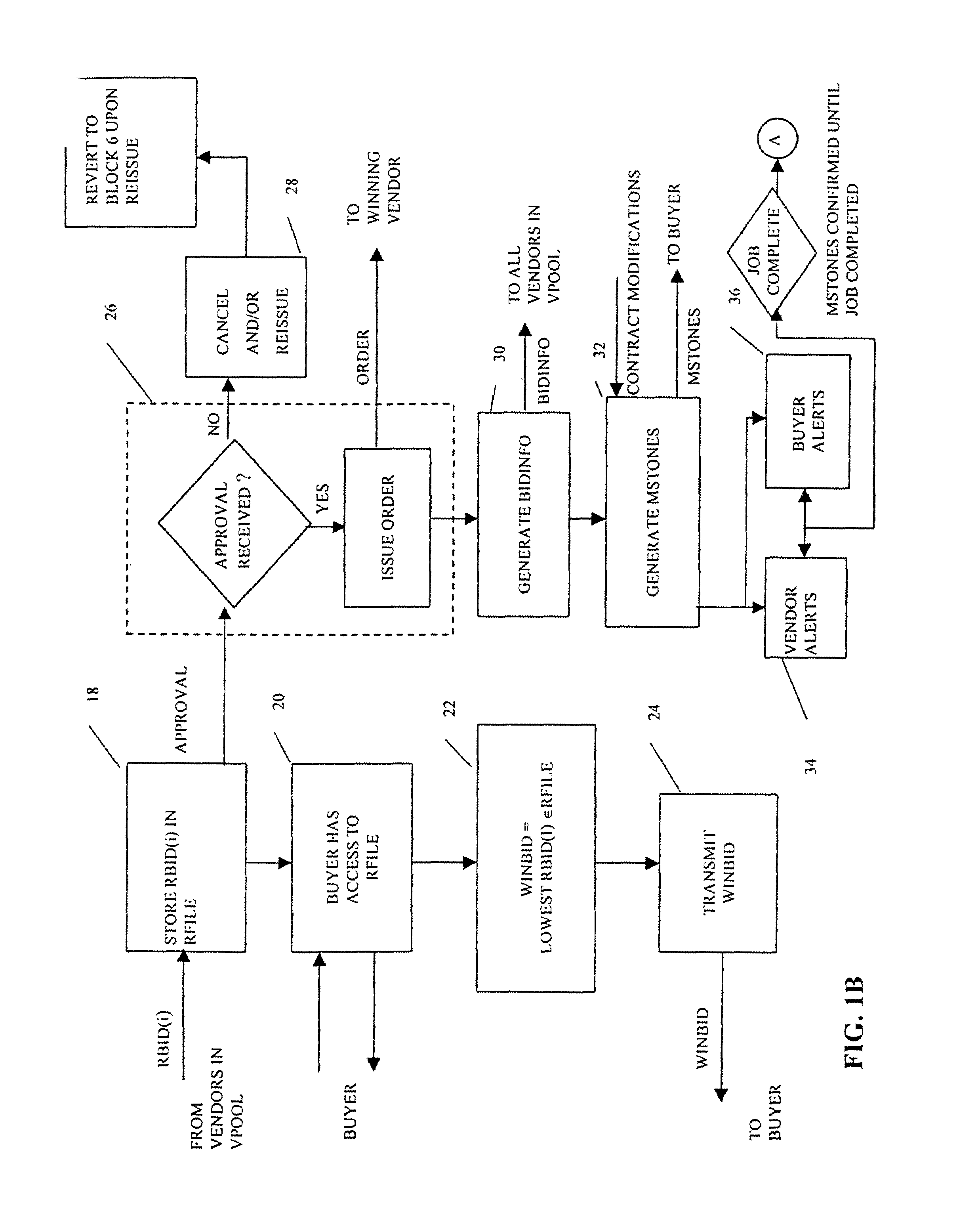Consequently, customized goods and services cannot simply be purchased “off-the-shelf” at fixed prices appearing on standard price lists.
In following this general procedure in the prior art, however buyers of customized goods or services confront the so-called “iron triangle” of quality, timeliness, and cost.
Buyers want a product or service that is good, fast, and cheap, but what they discover is that traditional procurements methods will, at best, only achieve two of these three goals on any given job.
Thus, a buyer might demand and receive top quality on a “rush” order, but only at a high cost.
Conversely, negotiating a lower price may achieve
cost savings, but also compromise quality and timeliness.
This problem is heightened by great elasticity in the so-called “market” price of many customized goods or services, which can vary widely from vendor to vendor and from week to week.
In the case of such vendors, idle equipment and labor can be devastating to their profit margins.
Because of the limitations of traditional procurement methods, vendors are often left not only with unscheduled holes in their production schedules, but also unable to fill
downtime purposefully
set aside for last minute “rush” orders from regular customers.
As a result of this tension between the cost of idle equipment and labor and the need to preserve
downtime for regular customers, vendors are constantly seeking short-turnaround jobs to fill their production “holes” when their regular orders do not materialize.
Contribution pricing occurs in the pubic sector because federal and state agencies are often required by law to make bid opportunities available to large numbers of vendors in order to obtain “full and open competition.” Where Government agencies are further required to award contracts to the lowest responsive and responsible bidder, procurements of customized goods typically result in
poor quality control and relatively high administrative costs that must be subsidized by the taxpayer.
There is a significant cost problem, however, associated with limiting the vendor pool to a small number of suppliers.
Such alternative prior art methods are now being adopted increasingly in the public sector due precisely to quality issues arising from “full and open competition.”
In both public and private sector customized product and service markets, however, traditional procurement methods and prior art devices have failed to solve the “iron triangle” because of their inability to take
advantage of “contribution” pricing without incurring prohibitive administrative costs or sacrificing quality or timeliness.
First, in order to find the manufacturer or
service provider who is willing to offer the lowest “contribution” pricing on any given job, the buyer must often request price quotations from a larger vendor pool than they are prepared or equipped to manage efficiently.
In the actual
business environment, however, identifying such a large vendor pool is generally not practical.
The main reason is that gathering and maintaining information about a large number of current and potential vendors is
time consuming and expensive.
Few companies have the time, money, or inclination to maintain a large, up-to-date database on such potential vendors, particularly when soliciting dozens of quotes or bids can itself require staff and administrative time that costs more than the savings generated from receiving a greater number of competitive bids.
This disparity is heightened by the fact that many customized goods or services involve relatively low dollar purchases or procurements, which is often the case, for example, with printing jobs.
Second, even if a buyer were willing to absorb the administrative costs associated with establishing, maintaining, and managing a large database of vendors to improve the competitiveness of their bidding, the buyer is often reluctant to do so because
quality control becomes more difficult as the vendor pool increases.
This is difficult not due only to the volume and nature of the information required, but also to the fact that the buyer must generally obtain such information from its own dealings with the vendor.
In such circumstances, the reliability, price history, and quality of a vendor's work for other buyers may not be obtainable.
As a result, buyers are reluctant to seek goods or services from new vendors because negative information on their reliability or quality may then have to be learned first hand.
This problem is made more acute by the fact that the procurement of customized goods and services frequently requires
specialized knowledge and expertise in finding the right vendor for each job.
As a result, the
purchasing official is ill-equipped to manage large numbers of customized procurements efficiently and without loss of control over the production of individual jobs.
Instead, the
purchasing official is forced to rely on the vendor's expertise in designing or
engineering a job, which often results in a more expensive (and more profitable for the vendor) design,
engineering, or production process.
Third, even if the buyer is willing to make the financial investment necessary to hire procurement personnel with the administrative experience,
staffing resources, and specialized product knowledge to manage a large pool of vendor and monitor each job closely for
quality control and contract compliance, the buyer has no guarantee that vendors will offer contribution pricing.
The reason is that even vendors who would
gain, in an immediate sense, from contribution pricing to fill a production hole are frequently unwilling to offer that pricing to their regular customers.
Such vendors are primarily concerned about losing their customers' goodwill when the vendor is unable or otherwise fails to offer contribution pricing on a repeat basis.
The vendor is then faced with a Hobson's choice of either risking the loss of the customer account by refusing the less profitable job (thereby forfeiting the sales and marketing costs previously incurred to obtain the customer account) or suffering financial loss by displacing more profitable work to accept the regular customer's lower paying work.
 Login to View More
Login to View More  Login to View More
Login to View More 


